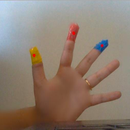Introduction: Breakout Board for ESP 8266 01
(Author: ALOK MISHRA).
ESP8266-01 is a great tiny little board. I'll start by talking about my motivation for making this breakout board for the ESP 01. It's simple, actually: I was looking at making a simple solution for flashing my programs onto the ESP 01 without having to connect the CP2102 USB to Serial Adapter via breadboarding it, as the connections would be rather haphazard. Without further ado, let's start with this little project!
Step 1: What You'll Need:
1. Software to monitor output from the ESP Essentially a debugging tool. For those of you who have the Arduino IDE preinstalled, simply launch Serial Monitor by choosing the port which the CP2102 appears on.. Select the appropriate Baud Rate, and you're good to go.
2. ESP 8266 Type 01 The star of the show.
3. Female Headers We'll be needing these to plug the ESP 01 .
4. Male Header (2 pin) These will be used to connect the power supply and other peripherals to the breakout board(TX,RX).
5. Button This is used to ON/OFF the ESP 01.
6. AMS1117 5V to 3.3V Power Supply.
7. Three 10 k resistance for voltage divider circuit.
8. General PCB,connecting wire,Soldering iron, multimeter etc..
Step 2: Circuit Diagram
it's my own design
note:
1. rx pin is connected with Arduino or ttl tx pin.
2.tx pin is connected with Arduino or ttl rx pin.
In the schematic.The ESP's VCC pin is powered by the 3.3V output pin of the voltage regulator (AMS1117). The . The CH_PD and RST pin must also be connected to 3.3V. The GND pin is obviously connected to ground. The ESP's TXD pin can be connected directly to the RX pin of Arduino The ESP's RXD pin is connected to the TX pin through the level shifter.This allows to have a more fast and reliable communication link between the Arduino board and the ESP-01 module.
Step 3: Done!
The picture is quite clear about what I have achieved.
If you've done it correctly, you should now be able to see your ESP within the Arduino environment via Serial Monitor!
Now look at my WEBSITE for more projects!
http://erox.66ghz.com/?ckattempt=1













